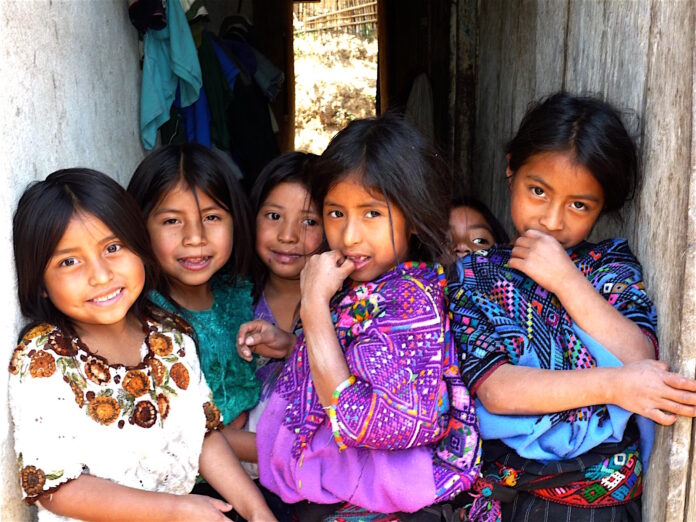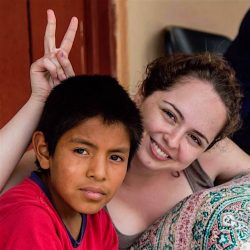Eddie Fernández, editor of Diario de Centro America, seems resigned as he ponders the circumstances of his native Guatemala, where he has worked as a journalist for more than 20 years.
“It’s funny,” he said, unsmilingly. “Despite all that has happened, Guatemala is one of the happiest countries in the world.”
Happiness is quantifiable, it turns out, at least according to happyplanetindex.org, produced by the U.K.-based New Economics Foundation. The index measures well being, life expectancy, inequality outcomes and the ecological footprint to measure how efficiently people use resources to lead fulfilled, sustainable lives.
The most economically successful countries, Happy Planet Index posits, are hardly the happiest. Under its terms, a small number of countries in Latin America and the Asia Pacific region get high marks. Guatemala is one of them, coming in 26th (far above the United States, which ranks a lowly 108th).
That’s an accomplishment, given Guatemala’s violent history. Except for a brief democratic period, popularly known as the “Ten Years of Spring,” after the 1944 overthrow of dictator Jorge Ubico, life has been unyieldingly onerous for most Guatemalans since the Spaniards arrived in the 1520s. Even after the country won its independence in 1821, U.S. corporations, especially the United Fruit Company, continued Spain’s legacy of exploitation and virtual enslavement of the majority Mayans.
But it was the ambitions of the democratically elected President Jacobo Arbenz Guzman in the early 1950s, and the reaction of United Fruit, that began the 36-year civil war and Mayan genocide. Though the war ended in 1996, the indigenous people brutalized by successive military governments have yet to receive reparations for their suffering (through government-orchestrated violence, mass murder and gang rape that affected hundreds of thousands of people in the 1980s and 1990s).
“Everyone has a place for their drunk uncle.” — Hip hop artist and activist Rebeca Lane
More than 30,000 mixed-race people, many of them priests and nuns who advocated for human rights, were also killed by the military. Under one of Guatemala’s most infamous dictators, General José Efraín Ríos Montt, who ruled Guatemala in the early 1980s, the Guatemalan Army was instructed to invade rural villages, often disguised as sympathetic rebels, to rape, torture and exterminate Mayans, including children. Some 600 Mayan villages were razed, and erased from the map. They literally no longer exist.
So why is Guatemala, now further crippled by poverty, illiteracy and drug-related gang violence, so happy?
“Indigenous culture is ingrained in day-to-day life,” explained Guatemalan hip hop artist, sociologist and feminist activist Rebeca Lane. “That’s why you don’t see homeless people begging on the streets in our villages. Everyone has a place for their drunk uncle.”
In a country where nearly 70 percent of the population is Maya, community and family culture are everything, Lane said. Traditional Mayan collectivist values are strong, and Guatemalans are sustained by their families and neighbors in ways no longer common in individualistic countries like the United States. Each village sports its own distinctive patterns on brightly-colored Mayan clothing, displaying the importance of community identity. The collective mindset preserves the traditions that so many injustices have tried to quash.
“No matter what, family culture is fortuitous,” Lane said. “City life puts up walls between people, and can make them isolated and self-centered, blind to the causes of unhappiness. Homelessness is concentrated in places where family and community are not strong.”
A focus on helping others extends beyond Guatemala’s rural villages to affect even the general population. Better-off, more progressive-minded “chapins,” as Guatemalans refer to themselves, are trying to use their class privilege to loosen the grip of social, racial and economic inequality. Recognizing the position her social class, mestizo status (she is half Mayan and half European), and university education gives her, Lane uses her status as an academic and hip-hop artist to make concepts like feminism, racism and colonialism more accessible to a largely illiterate audience, where women are maligned by misogyny and patriarchy.
“I was writing all these academic papers, and I started to ask myself, ‘Who am I doing this for?’” Lane said, of her decision to leave academia, and to make her reflections on race, social class and gender accessible via music. “It was for myself. I wasn’t helping any of the people I was writing about by putting out work that only other academics were seeing.”
Violence hasn’t ceased in the wake of the 1996 Peace Accords, and hip hop, according to Lane, has become a form of expression that youth have adopted to escape gangs and armed groups linked to drug dealing. Yet, as did their militant predecessors, Guatemalan authorities often use violence to repress hip-hop activism. Some of Lane’s artist and musician colleagues have been killed, or have disappeared; just two weeks before, one of Lane’s activist friends had been abducted and gang-raped. Lane and the friend were among activists who spoke out against the March 8th, 2017 fires that killed 52 teenage girls at Hogar Seguro Virgen de la Asunción, a state-run group home for minors, after the girls announced that they were being sexually abused. Lane and other protesters suspect the fires were intentionally set, and covered up by state authorities so that the perpetrators of the assaults would not be brought to justice.
“You know, this country is so beautiful, and there are so many things I love about it,” said Lane, admitting that she feared for her own safety. “But I also hate it here. I hate being here.”
Dr. Guillermina Herrera and her staff at the nonprofit Guatemalan Institute for Radio Education (IGER) provide long-distance radio education to those isolated rural populations the government ignores. Directed toward illiterate teens and adults, the program disseminates elementary, high school and college teaching through mail and long-distance radio. IGER’s community model relies on self-motivation, which the eager-to-learn Mayan people have in ample supply.
“We aim to strengthen society so citizens may participate politically,” Herrera said. “With hope, we can provide a path to better job opportunities and self-esteem.”
In the village of Santa Maria de Jesus, Mayan community leader Manuel Antún led us to the local radio station, where the radio host announced our arrival on the air. Each day, Antún and the station’s other volunteers work enthusiastically to keep the village and surrounding area’s 28,000-plus residents informed, also using the airwaves as a means of organizing collective work projects (such as building roads or digging wells) or to collect donations for families dealing with adversity.
“We are very embarrassed,” the announcer broadcast in Spanish. “Because today we have real journalism professionals from Rutgers in our studio, and we do not have any degrees.” It was disheartening to learn that the very people who were informing our worldview and teaching us so much considered themselves inferior.
But to that, I say that the world has a few things to learn, not only from Guatemala’s turbulent history, but from its persevering people, who continue to be rebelliously happy.


